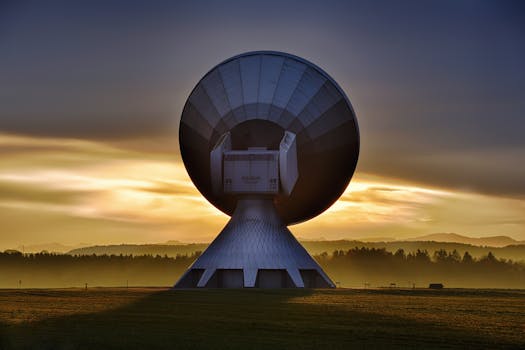
LEO Satellites: Revolutionizing Global Connectivity with WordPress
LEO satellites, or Low Earth Orbit satellites, are a type of satellite that orbits the Earth at an altitude of around 160 to 2,000 kilometers. These satellites have been gaining popularity in recent years due to their ability to provide high-speed, low-latency internet connectivity to remote and underserved areas. In this article, we will explore the world of LEO satellites and their impact on global connectivity, with a focus on WordPress.
WordPress, as a leading content management system, has been at the forefront of the digital revolution, and its integration with LEO satellites is set to take global connectivity to the next level. With the ability to provide fast and reliable internet access, LEO satellites are poised to bridge the digital divide and bring the benefits of the internet to millions of people around the world.
How LEO Satellites Work
LEO satellites work by orbiting the Earth at a low altitude, which allows them to provide high-speed internet connectivity to a wide range of devices, including smartphones, laptops, and tablets. These satellites use advanced technology, such as Ka-band and Ku-band frequencies, to transmit and receive data, and they are designed to be highly efficient and reliable.
One of the key advantages of LEO satellites is their ability to provide low-latency internet connectivity. Because they are in close proximity to the Earth, LEO satellites can transmit data quickly and efficiently, with latency as low as 20-30 milliseconds. This makes them ideal for applications that require real-time communication, such as video conferencing and online gaming.
Applications of LEO Satellites
LEO satellites have a wide range of applications, from providing internet connectivity to remote and underserved areas, to supporting emergency response and disaster relief efforts. They can also be used to provide connectivity to aircraft and ships, and to support the development of smart cities and IoT applications.
In addition to these applications, LEO satellites are also being used to support the development of new technologies, such as 5G networks and autonomous vehicles. With their ability to provide high-speed, low-latency internet connectivity, LEO satellites are set to play a key role in the development of these technologies and many others.
WordPress and LEO Satellites
WordPress, as a leading content management system, has been at the forefront of the digital revolution, and its integration with LEO satellites is set to take global connectivity to the next level. With the ability to provide fast and reliable internet access, LEO satellites are poised to bridge the digital divide and bring the benefits of the internet to millions of people around the world.
WordPress developers are already exploring the potential of LEO satellites to support the development of new applications and services. With the ability to provide high-speed, low-latency internet connectivity, LEO satellites are set to enable a wide range of new use cases, from remote work and education, to healthcare and finance.
Conclusion
In conclusion, LEO satellites are revolutionizing the way we communicate and access information globally, and WordPress is at the forefront of this revolution. With their ability to provide high-speed, low-latency internet connectivity, LEO satellites are poised to bridge the digital divide and bring the benefits of the internet to millions of people around the world.
As the use of LEO satellites continues to grow and evolve, we can expect to see new and innovative applications emerge. From supporting emergency response and disaster relief efforts, to enabling remote work and education, LEO satellites are set to play a key role in shaping the future of global connectivity.


